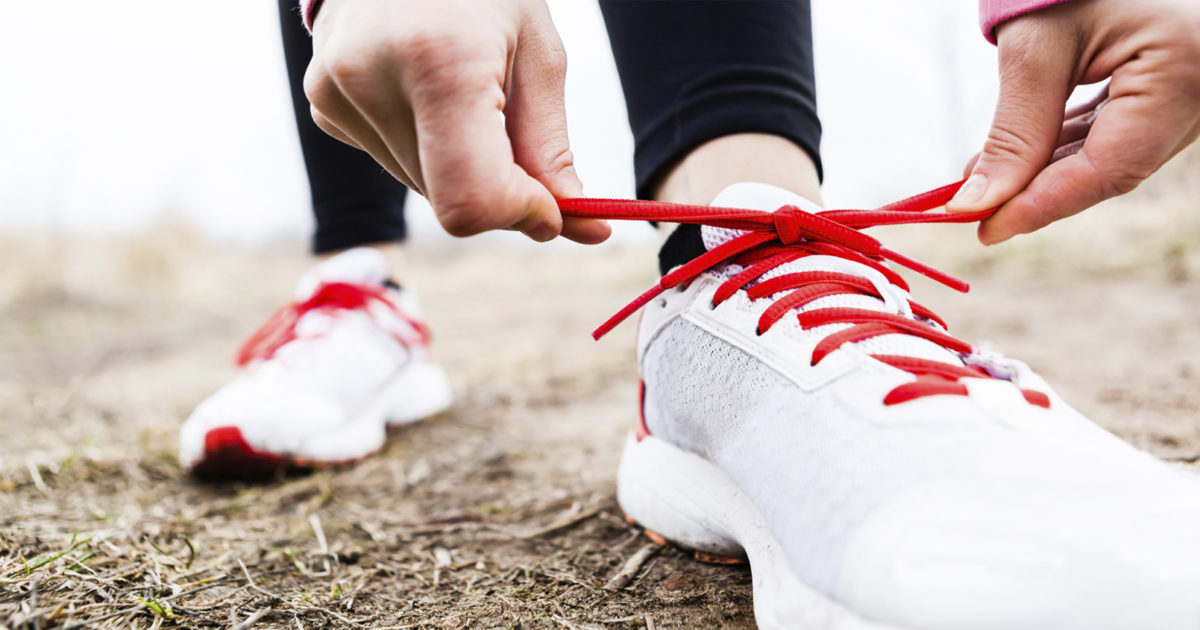
October 27, 2016 - TCO
The simplest way to find your perfect running shoes (and how to tie them!)
Way to go! You’ve already committed to running regularly, and now it’s time to find the perfect running shoes. You’re going to be logging some serious mileage and prepared to make an investment in a new set of kicks. Whether you’ve started shopping for your running shoes or not, this guide is your no-nonsense, practical guide to getting it right.
We were inspired by a refreshing article on Greatist.com that also embraces a realistic approach to shopping for running shoes.
The bottom line
Let’s just cut to the chase. When it comes to picking out the right running shoe, the most important consideration is fit. If the shoe fits, wear buy it. This goes for pretty much everyone, unless you’re an elite, world-class athlete. We will discuss the numerous shoe types designed for runners with every kind of gait (walking/running form), but even if you read no further than this sentence, walk away (see what we did there?) with a goal of finding the shoes that provide the most comfortable, natural fit. You’ll run easier, safer and happier.
*Note: If you have suffered a foot or ankle injury in the past, we advise you to first consult with a TCO foot and ankle specialist before returning to strenuous exercise, as you may have an increased chance of reinjury.
Understand your unique running form
What you’ll learn by searching online or visiting a specialty store is that running shoes are categorized into four groups: neutral, stability, motion control and minimalist. Each category is defined by its effect on a runner’s “pronation” or “supination” during their gait, which is the amount that the foot rolls inward or outward while running. Slight pronation (inward roll) is normal, and most common.
You can have a running shoe expert examine your gait, or you can film yourself running past your phone a few times, but once you identify how you run, it may help identify which shoes to try on first. You can surely find a great shoe without first examining your gait, but many runners appreciate the validation of understanding their unique running form.
Neutral = Best for runners with little or no pronation
Stability = Best for runners with moderate pronation
Motion control = Best for runners with overpronation
Minimalist = Best for serious runners who want to slowly increase the strength in their feet
Finding the perfect fit
Here are some general guidelines to help you quickly find your perfect running shoe.
- Lightweight runners tend to prefer sleeker, thinner shoes
- Heavier runners tend to prefer larger, more cushioned shoes
- The heel should be snug
- Toes should have a little wiggle room
- There should be a little space between big toes and the tip of the shoe, to account for natural swelling during exercise
Finally, keep in mind that shoes should fit properly from the day you begin wearing them, not after being “broken in” over time. So, where can you find your perfect shoes?
Where to buy:
Specialty store
If you enjoy personal attention and customer service
If you’re brand-new to running or specialty shoe buying, you should consider visiting a running store with non-commission salespeople. A trained expert will help you try on multiple pairs, examine your gait and make educated recommendations. The enthusiasm for running, racing and health at these stores is contagious! And remember to wear running-appropriate clothing to test out the new kicks!
Here are some quality stores in the Twin Cities:
- Fleet Feet in Minneapolis
- Gear Running Store in Edina
- Mill City Running in Northeast Minneapolis
- TC Running Company in Eden Prairie
Buy online
If you’re trying to get the most out of your Amazon Prime membership
Some people just simply prefer to buy online. Now that you’re armed with the knowledge of what to look for, here are some links to get you started:
- The highest-rated running shoes on Amazon.com
- Customize your own unique NIKEiD running shoes.
- RetailMeNot usually has great coupon codes for Eastbay.com.
Bonus: Running shoe lacing techniques
This image from imgur.com says it all.

